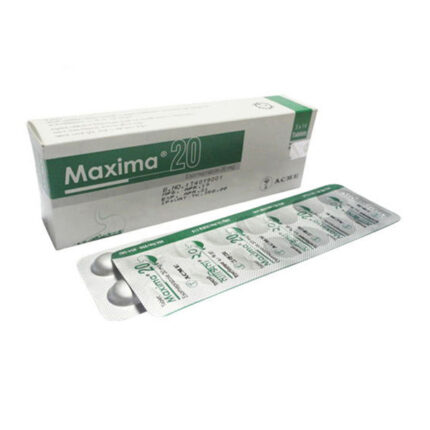Introduction
Evania 25 is used alone or in combination with other medicines to treat type 2 diabetes mellitus. It helps control the high blood sugar levels seen in diabetes. This reduces the chances of serious complications of diabetes and also helps prevent heart disease. Evania 25 can be taken with or without food at any time of day but you should try to take it at the same time every day. The dose will be decided by your doctor. Do not stop taking it without asking your doctor. If you do, your blood sugar levels may increase and put you at risk of serious complications like kidney damage and blindness. This medicine is only part of a treatment program that should include a healthy diet, regular exercise and weight reduction as advised by your doctor. The most common side effects of this medicine include nausea, frequent urge to urinate, increased thirst, urinary tract infections and hypoglycemia (low blood sugar levels). It may cause the body to lose too much water. Drinking plenty of fluids to prevent dehydration. Some people may develop fungal infections in the genital area. Maintaining good hygiene can help prevent this. Before taking this medicine, inform your doctor if you have any kidney or liver problems or a urinary tract infection or if you are on water pills (diuretics). Pregnant or breastfeeding women should also consult their doctor before taking it. Avoid excessive alcohol intake while taking it as this may increase the risk of developing some side effects. Monitor your blood sugar levels regularly while taking this medicine.
Uses of Evania 25
- Type 2 diabetes mellitus
Side effects of Evania 25
- Frequent urge to urinate
- Genital fungal infection
- Increased thirst
- Nausea
- Urinary tract infection
How to use Evania 25
Take this medicine in the dose and duration as advised by your doctor. Swallow it as a whole. Do not chew, crush or break it. Evania 25 may be taken with or without food, but it is better to take it at a fixed time.
How Evania 25 works
Evania 25 is an antidiabetic medication. It works by removing excess sugar from your body through urine.
What if you forget to take Evania 25?
If you miss a dose of Evania 25, take it as soon as possible. However, if it is almost time for your next dose, skip the missed dose and go back to your regular schedule. Do not double the dose.
 Quick Tips
Quick Tips- Evania 25 is used alone or together with other diabetes medicines to control blood sugar and avoid long-term complications.
- It may cause your body to lose too much fluid (dehydration) or you may urinate more often. Drink plenty of water and stay hydrated.
- It may cause hypoglycemia (low blood sugar level) when used with other antidiabetic medicines, alcohol or if you delay or miss a meal.
- Always carry some sugary food or fruit juice with you in case you experience hypoglycemia symptoms such as cold sweats, cool pale skin, tremor and anxiety.
- It can cause genital fungal and/or urinary tract infections (UTIs) in both females and males, so practice good hygiene.
- Monitor your blood sugar regularly while taking this medicine.
- Inform your doctor immediately if you experience constant dizziness, joint pain, cold-like symptoms or unexplained nausea/vomiting.
 Brief Description
Brief DescriptionIndication
Type 2 diabetes mellitus
Administration
May be taken with or without food.
Adult Dose
Oral Type 2 diabetes mellitus Adult: Initially, 10 mg once daily in the morning, may be increased to 25 mg once daily, if necessary for additional glycemic control.
Renal Dose
CrCl (mL/min) <45 Contraindicated. <60 Max: 10 mg daily.
Contraindication
As treatment for type 1 DM or diabetic ketoacidosis. Renal impairment (CrCl <45 mL/min), ESRD, or patients on haemodialysis. Lactation.
Mode of Action
Empagliflozin is a reversible inhibitor of sodium-glucose co-transporter 2 (SGLT2), the main site of filtered glucose re-absorption in the renal proximal convoluted tubules. This reduces re-absorption of filtered glucose and lowers renal threshold for glucose, resulting in increased urinary glucose excretion, thereby reducing blood glucose concentration.
Precaution
Hypotension: Before initiating Empagliflozin, volume status should be assessed and correction on hypovolemia should be made in the elderly, in patients with renal impairment, in patients with low systolic blood pressure and in patients on diuretics since Empagliflozin causes intravascular volume contraction. Impairment in Renal Function: Renal function should be evaluated prior to initiating Empagliflozin and periodically thereafter since Empagliflozin increases serum creatinine and decreases eGFR. Hypoglycemia: In patients taking insulin or an insulin secretagogue with Empagliflozin, a lower dose of insulin or the insulin secretagogue is considered to reduce the risk of hypoglycemia. Genital mycotic infections: Monitoring and treatment should be done if indicated. Urinary Tract Infections: Monitoring and treatment should be done as appropriate. Increased LDL-C: Monitoring and treatment should be initiated if required. Lactation: Discontinue Empagliflozin or discontinue lactation.
Side Effect
1-10% Urinary tract infection (7.6-9.3%) Female genital mycotic infections (5.4-6.4%) Upper respiratory tract infection (3.1-4%) Increased urination (3.2-3.4%) Dyslipidemia (2.3-2.4%) Male genital mycotic infections (1.6-3.1%) Nausea (1.1-2.3%) Polydipsia (1.5-1.7%)
Pregnancy Category Note
Pregnancy Based on animal data showing adverse renal effects, use not recommended during the second and third trimesters of pregnancy Limited data available in pregnant women are insufficient to determine a drug-associated risk for major birth defects and miscarriage There are risks to the mother and fetus associated with poorly controlled diabetes in pregnancy Clinical considerations Poorly controlled diabetes in pregnancy increases maternal risk for diabetic ketoacidosis, pre-eclampsia, spontaneous abortions, preterm delivery, stillbirth, and delivery complications; poorly controlled diabetes increases fetal risk for major birth defects, still birth, and macrosomia related morbidity Lactation There is no information regarding presence in human milk, the effects on breastfed infant or on milk production Empagliflozin is present in the milk of lactating rats Because of potential for serious adverse reactions in a breastfed infant, advise women that it is not recommended while breastfeeding
Interaction
Additive hypoglycaemic effect if concomitantly used w/ insulin and insulin secretagogues (e.g. sulfonylureas). Increased risk of dehydration and hypotension when used w/ diuretics (e.g. thiazides, loop diuretics).











Reviews
There are no reviews yet.